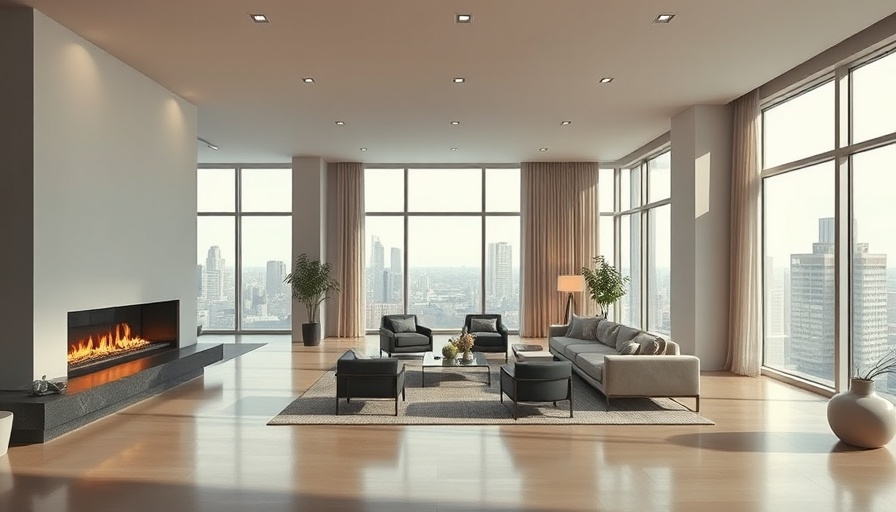
The Hidden Impact of Room Design on Space Perception
For homeowners looking to make the most of smaller spaces, understanding how design choices can influence perception is vital. While it may seem tempting to go for darker colors or fill every corner with furniture, these decisions can make a room feel cramped rather than cozy. Contrarily, employing clever design techniques can enhance the perceived spaciousness of your home, even without major renovations.
Avoiding Dark Colors: Brightening Your Space
Many people enjoy the ambiance created by rich and dark paint colors like navy blue or deep burgundy. However, these can easily lead to a room feeling smaller and more enclosed if not balanced correctly. Instead of completely eschewing darker shades, consider adding bright accents or pairing them with light fabrics to balance the mood. Think contrasting colors, light furnishings, or reflective accents that can help lift the space. Light colors engage the room’s natural light, making even the smallest areas appear more welcoming and larger.
Furniture Placement: Don't Push it to the Edge
One common mistake is pushing all furniture against the walls, which many believe will create a more open space. However, this can create a stark and disjointed look. Instead, try leaving a few inches between pieces and the walls to create visual space. Room layouts that allow for conversational zones or slightly away from the wall can make a big difference in how spacious the area feels. Fluffy rugs can further define these spaces, creating warmth and an inviting atmosphere.
Lighting Styles: The Power of Layering
Good lighting plays a crucial role in how we perceive the size of a room. Overhead lighting can sometimes feel harsh and uninviting, while layered lighting—think table lamps, wall sconces, and softer overhead lights—adds depth. Properly mixed lighting solutions illuminate the room from different angles, creating a cozy, spacious feel. This helps in making spaces feel airy rather than closed in, especially in smaller homes where natural light might be limited.
The Art of Mirrors: Aim for Strategic Placement
Mirrors aren’t just decorative elements; they can be powerful tools in spatial perception. When positioned strategically, mirrors reflect light and create a sense of depth. Placing a mirror opposite a window, for instance, allows you to extend the outdoor view and bounce natural light around, brightening even the tiniest of rooms. Additionally, consider using mirrored furniture pieces or decorative items that enhance this illusion without overwhelming the space.
Choosing Wallpaper Wisely: Balance is Key
Wallpaper can add character, but too much busy patterning can overwhelm a small room. Stick to one accent wall with an interesting design, which can draw the eye and create a focal point, while keeping the rest of the walls lighter and simpler. This careful selection allows you to retain personality in your space without sacrificing openness.
Practical Insights for Homeowners
Being mindful of design mistakes can pave the way for a more inviting environment. Create spaciousness with simple tweaks like lightening your color palette, repositioning furniture, and embracing multifaceted lighting options. These adjustments can radically alter the feel of your space, encouraging you to enjoy your home in a new way.
Take the Next Step in Transforming Your Space
With these insights into common design mistakes, you can now approach your home decor with a fresh perspective. Whether you’re planning an extensive redesign or seeking small adjustments, remember that each choice has a lasting impact on how you experience your surroundings. Transform your home today!
 Add Row
Add Row  Add
Add 




Write A Comment